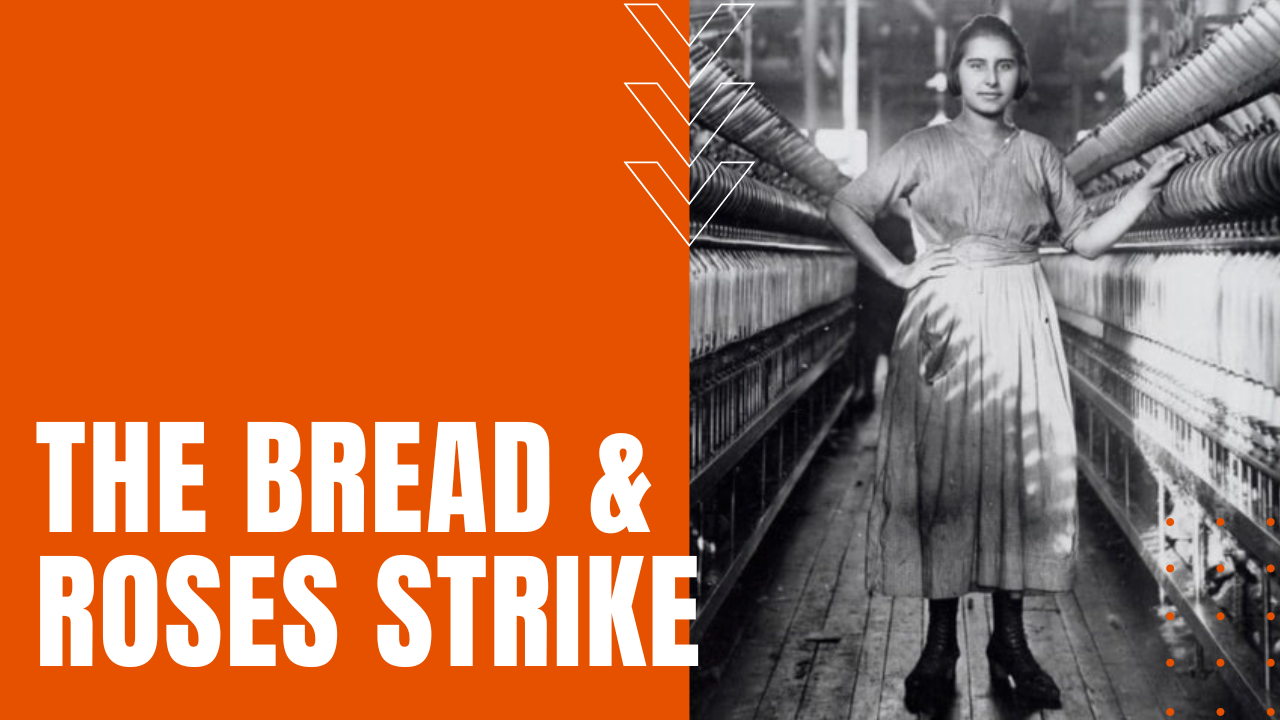The Bread and Roses Strike

When the state of Massachusetts reduced maximum workweek hours for women and children from 56 to 54, impoverished textile workers in Lawrence saw their average pay drop from $8.76 per week to $8.44—a difference that left many with the hard choice between eating a meal or going hungry.
Immigrant City
Known as “Immigrant City,” due to the town’s melting pot diaspora of residents from 51 nations, after female and child workers at the Everett Mill walked off their jobs, when the news reached the city’s wretched tenements that evening, by January 12th, 1912, more than 10,000 workers had walked off their jobs in solidarity, protesting in frigid conditions with the communal cry of “Short pay! All out! All out!” and the ultimate call for dignity, “We want bread, and roses, too.”
Rapidly Spreading Strike
After their numbers continued to swell, some strikers began vandalizing the textile mills of Lawrence, prompting police and state militia to beat back the most aggressive offenders with bill clubs. Lacking even a hint of common culture or language, the Bread and Roses strike went viral in newspapers across the country, as journalists reported on how the ethnically-diverse strikers employed soup kitchens, ethnic fraternities, community centers and food donations by local farmers to feed striking workers.
Mill Owners Hire Outside Agitators
After mill owners and city officials hired outside agitators to discredit the strikers in the court of public opinion, on January 29th, strikers attacked a streetcar carrying strikebreakers, resulting in an errant shotgun blast that led to the death of Anna LoPizzo, followed a day later by 18-year-old John Ramey, after he was stabbed in the shoulder by a militiaman.
Children’s Exodus
The violence led to what became a publicity coup known as the “children’s exodus,” when striking parents sent 119 children to live with relatives and total strangers in Manhattan, while a second group of 46 children bound for Philadelphia met with violence, when police dragged striking mothers by their hair as their traumatized children looked. The horrendous optics in the national press led to hearings on Capitol Hill, shedding light on deplorable working conditions inside Lawrence mills, where respiratory infections caused by lint and dust revealed an average worker lifespan of 40 years.
Horrendous Working Conditions
Fourteen-year-old Carmela Teoli shocked lawmakers when she recounted how a mill machine tore off her scalp, leaving her hospitalized for seven months. Forced to capitulate under mounting outside pressure, mill owners agreed to a 15% wage hike, increased overtime pay and a promise not to retaliate against strikers, making the Bread and Roses Strike, a landmark event in the American labor movement.
